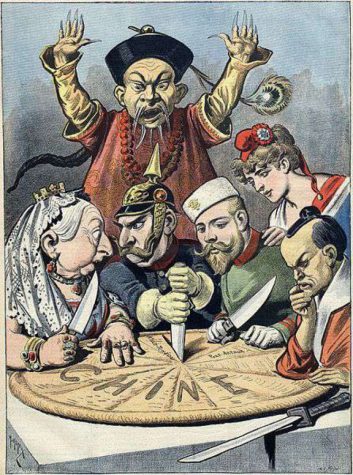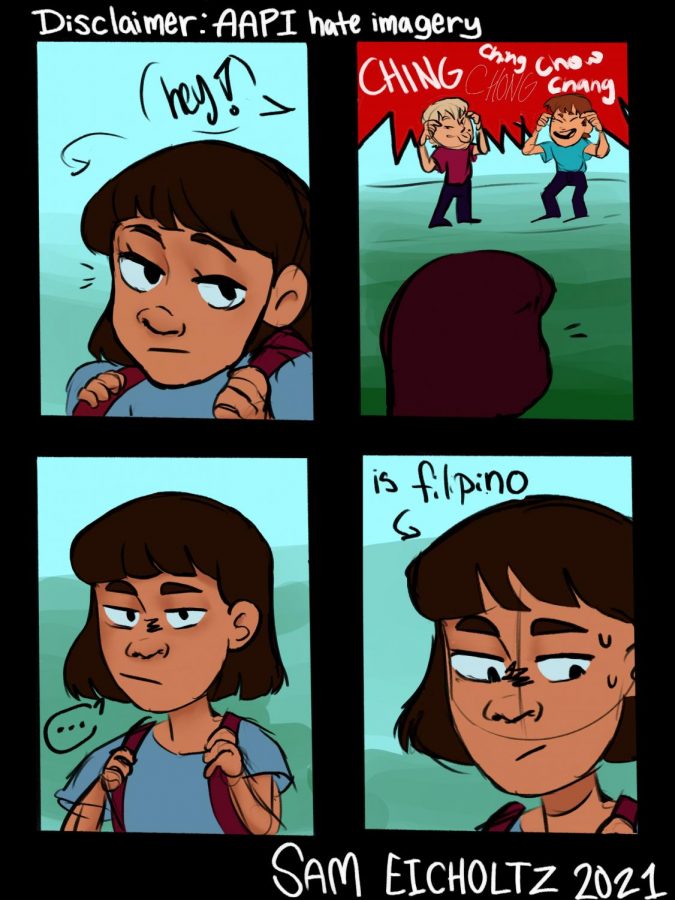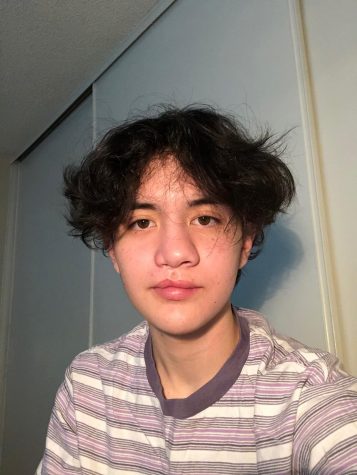AAPI Hate: An Issue Spanning American History”
May 4, 2021
DISCLAIMER: article contains mentions of sex, violence, murder, and racism.
Many instances of violence and harassment have been onslaught against Asian Americans and Pacific Islanders (AAPI); especially during this past year. The most prominent current example being the Atlanta shooting, which took place Mar. 16, 2021 that left eight people dead at three different spas in the metro area. This incident is only a reflection of the history that precedes it. Six of the eight victims were asian and seven were women; and yet, the question of deeming this homicide as a “hate crime” is still being debated.
A deputy sheriff overshadowed the murders by stating the suspect’s “sex addiction”, and adding that the day of the shootings was a “really bad day” for the alleged shooter. Understandably, this claim has since been met with criticism and skepticism. The actual motive behind the crime is left to be deciphered. But the question of whether this string of murders was done out of AAPI hate has been a burning question for the past week and a half; and one that should not be pondered by a country that emphasizes its own domestic strength and equality.
Joyce Chi (12) states that “I think the fetishization of Asian women played a huge role in the shootings.” She also adds that, “this idea that Asian women are subservient and docile is an idea that has been implied and ingrained in American society.”
“People tend to think of certain micro aggressions towards AAPI as compliments”, Chi continued. “For example, the ‘smart’ stereotype of Asian people can be seen as a positive remark; however, it can actually be detrimental to the mental health of Asian children and set standards that they do not fit.”
This argument is also reiterated and developed by the ANHS Dear Asian Youth Club President, Cassidy Lo (11), who states that“The model minority myth largely contributes to the normalization and dismissal of AAPI hate crimes.”
Chi also sent a political cartoon highlighting this racism.It depicts the effects of colonization and imperialism on Asian communities and how these nations had no hand in the decisions that would alter their livelihoods.

Additionally, Chi has an Instagram account — which can be viewed through https://instagram.com/asianarchives_?igshid=wjfhy0lsn1m6 (@asianarchives) — that she runs, aiming to highlight honorable Asian figures. She hand draws their portraits and gives an in-depth description of the featured person(s) under each post.
To say that AAPI hate has only been happening recently would be a grave miscalculation. Like many, my grandparents are Filipino Americans who immigrated to this country during the 1970’s in search of a more prosperous life for themselves and their children.
“When I first immigrated to New York, there were very few AAPI people in the region”, says Bal Villanueva, my Lolo (this means grandfather in Tagalog, the universal language of the Philippines). “In the Philippines, and many other Asian countries, we value collectivism and respect for our elders. In the United States, however, there is more emphasis on the individual.”
“When I was working a job in New York during the 1970’s, an Italian American coworker was passing out flyers to everyone”, Villanueva added. “I noticed that I was the only person who did not receive a copy. I asked for a copy, and the man threw one at me. I confronted him and asked ‘Do you want to talk about this outside?’”
“Nobody behaves that way in an office setting”, he continued. “Eventually, we became good friends with time after I proved myself and my intelligence. He was simply not used to seeing someone different from him.”
This was not his only encounter with subtle racism though, as he has experienced other incidents where people would correct his speech or make him the target of their microaggressions. It is also important to note that he questioned whether or not these micro-aggressions were formed out of prejudice.
At the end, he added that “race equality is not a simple equation, it has to come from each and every one of us. People should read, learn, and understand one another and pass that wisdom down to their children.”
However, he also stated that “you cannot change everyone. Some people will never understand”. As difficult as it is, he advised to “accept who they are and move on. Do not personalize it, otherwise, you will become stuck.”
Student-run clubs on campus are working to raise awareness on the issue and create a more inclusive and educated environment for students. Cassidy Lo (11), Club President of the Dear Asian Youth club states that “I think the best way to combat this issue is by choosing to educate yourself, as most hate crimes come from a place of ignorance. Additionally, those affected and not affected by the crimes have to care.”
“Through our club, we do our best to post and share information with students at Aliso to create a more supportive and inclusive environment”. For more information about the club and AAPI issues, their instagram page can be viewed at https://instagram.com/dearasianyouth_anhs?igshid=1w3lkdpycc29 (@dearasianyouth_anhs).
The club is also holding a fundraiser throughout the month of May at Ding Tea in Mission Viejo. Lo added that “All proceeds raised will be going to the “Hate Is A Virus” organization, which funds operations and initiatives to combat xenophobia and racism and to help support small Asian owned businesses that have been affected by Covid-19”.
AAPI citizens have had their issues “brushed under the rug” for centuries. Constantly the ends of people’s jokes, colonization, and imperialism. Yes, it is true that today’s standards are different than those of the past, but it is not an excuse to brush over the grievances of minorities and their stories.
There has also been an increase in animosity between minorities due to the “model minority” myth and other stigmatizations. This violence is only hindering all parties involved. People have a right to be mad, but it is important to not displace this anger onto others and “feed the fire”. It would be critical to lose sight of certain goals and intentions.
Awareness, a degree of understanding, and education are the most powerful tools to fight against prejudice. Racism will not be fixed tomorrow or any time soon, but respect and acknowledgement are steps in the right direction.

